Anthony noticed a crown-shaped image on a carton of milk (seen at right), and asked what it was. I explained that it was what happens when a drop of milk splashes, and he was quite interested, though somewhat skeptical.
I promised to show him, explaining that it was too fast for the eye to notice, but that we could use a camera to stop the action. His interest was piqued.
I set the camera up on a tripod, got a black dish and put some milk in it, set my SB-800 flash as a slave on 1/64 manual power and pointed it at the dish, dipped a thin straw into a glass of milk to get some, and let a drop fall into the dish. Timing and aim were a bit tricky, but in short order we had a good shot...
As we checked the image on the screen on the back of the camera, Anthony was positively amazed and very excited.
The flash was very close (you can see it a bit in the lower-left of the frame above), and eventually I thought to move it further away, to make the shadows more harsh, which I thought might add some drama. I also added more milk, to create a deeper pool...
Small drops produced dainty splashes...
I also wanted to show what happens when the crown collapses on itself, slamming together in the center and, with no where else to go, shoots straight back up like Old Faithful. I knew this would be more pronounced with a deeper pool, so I switched containers...
I tried some more with a dark tray under the dish, but after a few minutes he had had enough, so I took the camera off the tripod to get a shot showing the setup...
I then brought the camera back to my office to clean the milk-splattered lens.
This all reminded me of the science-fair project I did for my high-school physics class. I got a high-speed scientific strobe from the teacher, Mr. Killius (whom we all called “Dr. K”) and set up a trigger made from wire and barely-separated aluminum foil, on top of which I put a plate filled with water. When the a drop hit the plate, the strobe was triggered. The strobe had a delay timer, so I could dial in delay to catch later parts of the splash, and took a bazillion pictures on old B&W film that I then developed myself in the high-school darkroom. (This was probably my last serious use of a camera until 20+ years later I fell back into photography when I bought a Nikon D200.)
Based on all these photos, I postulated how the various forces in physics worked together to explain what I saw, from the crown, the “jewels” on the crown, the “old faithful” appearing later, etc. Now that I think about it, I should have been able to find all this in the library, but at the time it apparently didn't occur to me, and I derived it all myself.
At the science fair, some officials would come around and ask questions, and one guy in particular really gave me the third degree, especially about the force interactions toward the end of the splash. I though it was a bit weird that he was so interested, but I was able to answer all his questions.... until he asked “where else in nature do you see this?”. Huh? What kind of question is that? In a rainshower, I guess. I dunno. I had no idea what he was after, and probing on my part didn't reveal a clue, so in the most literal sense, I was totally clueless.
And with that, I found out later, I missed Best of Show, and it was granted to someone else. In retrospect, I find it hard to believe that a bunch of photos of water splashes could even be considered interesting, so maybe I'm misremembering the details. I do remember, vaguely, seeing the exhibit that did win and thought that it was a heck of a lot better than mine.
Anyway, I also found out that the answer the guy wanted was the little mountain found in the center of impact craters on the moon. The forces of impact reverberate throughout the body of the moon, then reflect right back to the point of impact, giving the presumably molten rock a bit of a push upward, sort of like the “old faithful” above. Or something like that.
By the way, about the milk carton, the “Milk as Milked” refers to the fact that the percent of fat is not controlled, but natural (as opposed to “lowfat” or “2% milk” common in The States). Japanese milk generally is left like this. Americans, used to watered-down milk, sometimes think that Japanese milk has had sugar added. But it hasn't.... it's milk as milked (assuming, of course, that the cow udder has a pasteurizer built in. 🙂 .)
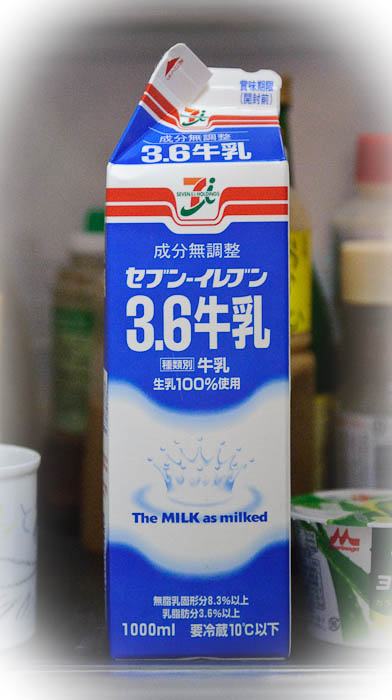
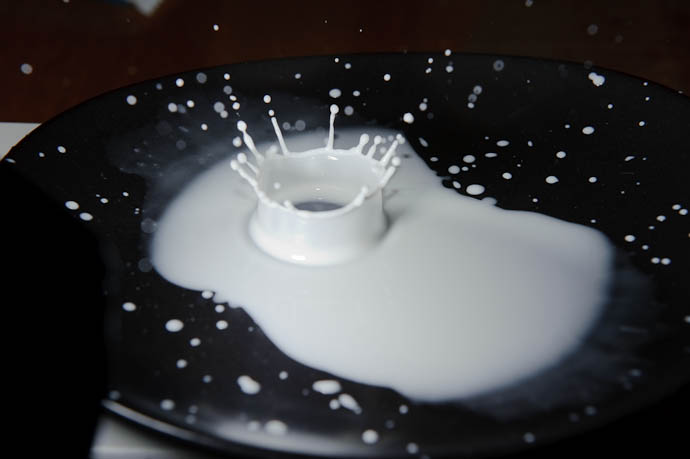
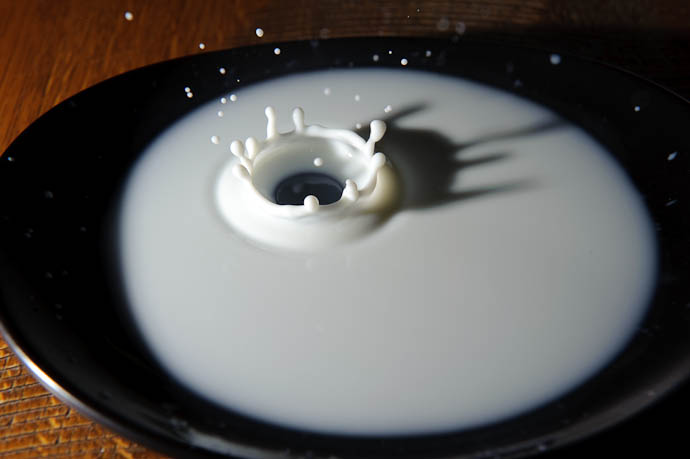
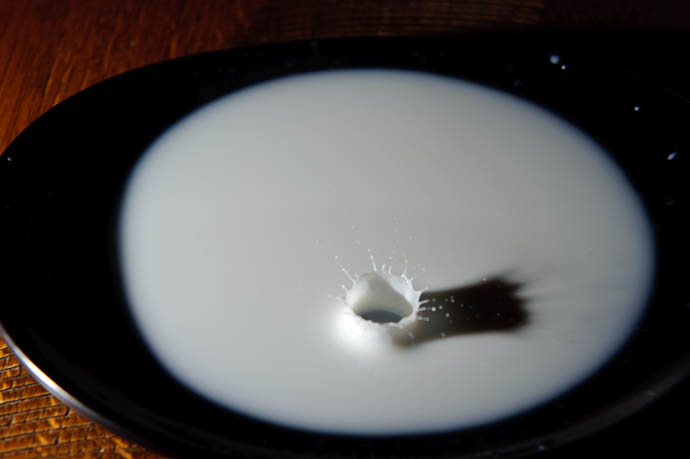
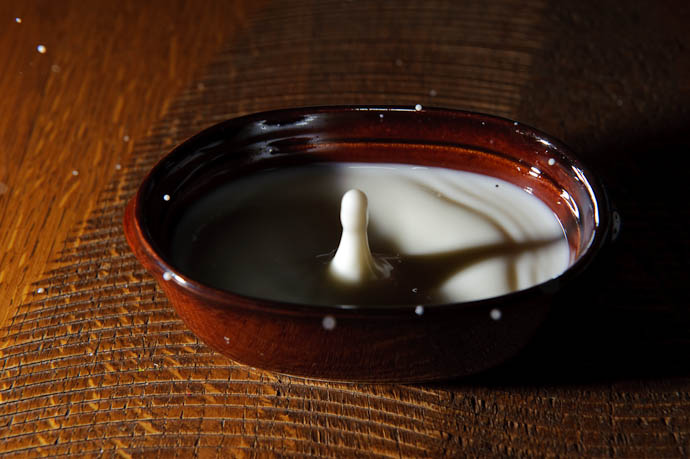
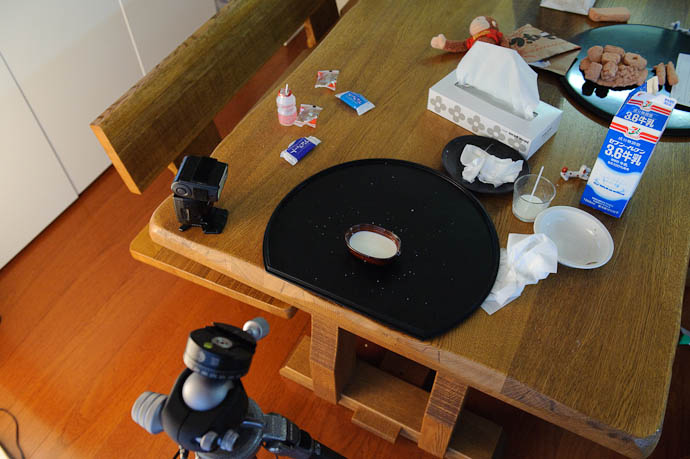
It’s just like a nice coincidence that you did this nice photo !
Last week the Strobist wrote a nice article on “How to Photograph Water Drops with One Speedlight “.
I would like to try it myself but didn’t found time now.
Here is that page on Strobist blog.
Jeff,
There was a posting with a couple of videos on Strobist.com this week about photographing water drops. They used a high speed camera to get the splash in motion.
http://strobist.blogspot.com/2009/05/how-to-photograph-water-drops-with-one.html
The second video on the page was professionally produced and is very good.
So, it seems that the Japanese milk is like Firefox. And we Americans are drinking Microsoft Milk. “Hey this milk tastes funny!” No, actually this milk tastes like milk. What you are drinking tastes funny.
I remember when you set up that project in the bathroom; you really did get good results. I think some of your photos are still around here somewhere.So glad that Anthony found it interesting,,,,even if only to a point. You were ten years older than he when you did this. He’ll remember it, I’m sure.
Splash Glug Pling Plonk
Say that three times fast!
I had some of that same amazement when I saw Martin Waugh’s website of his work. I bought a photo trigger kit, borrowed a friends Nikon SB600 (sacrilege!) and froze myself in January taking photos out in the garage (my first photos on Flickr). I wanted better so I bought a bunch of external flash gear to do properly composed drops…. and haven’t done it again for over a year and a half. Someday, someday…